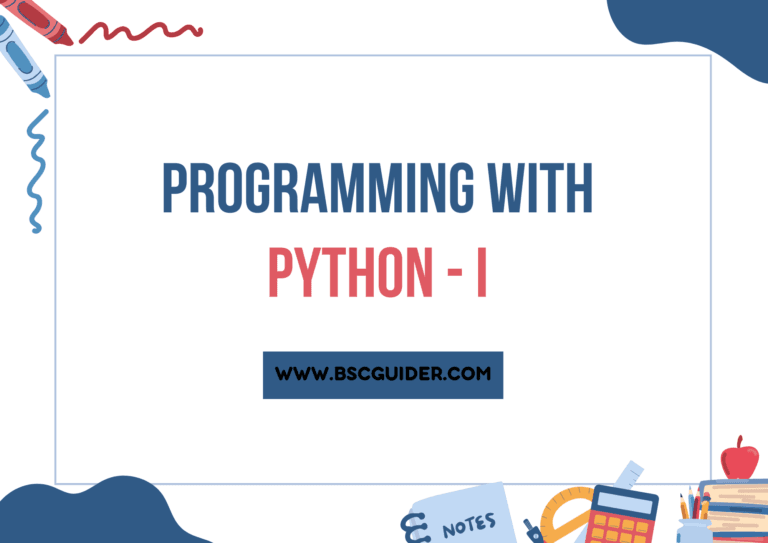
Programming with Python is a core subject in the BSc CS 1st Semester. This course introduces students to the basics of Python programming, covering fundamental concepts like variables, data types, control structures, functions, and object-oriented programming. It is designed to build a strong foundation in programming that supports future learning in computer science. High-quality notes for this subject are provided by BSC GUIDER, a trusted source for BSc CS 1st Year students. These notes are carefully crafted to be clear and easy to understand, making them an excellent resource for mastering Python programming essentials.
Programming With Python - 1 Notes Unit 1 – 3
Unit 1
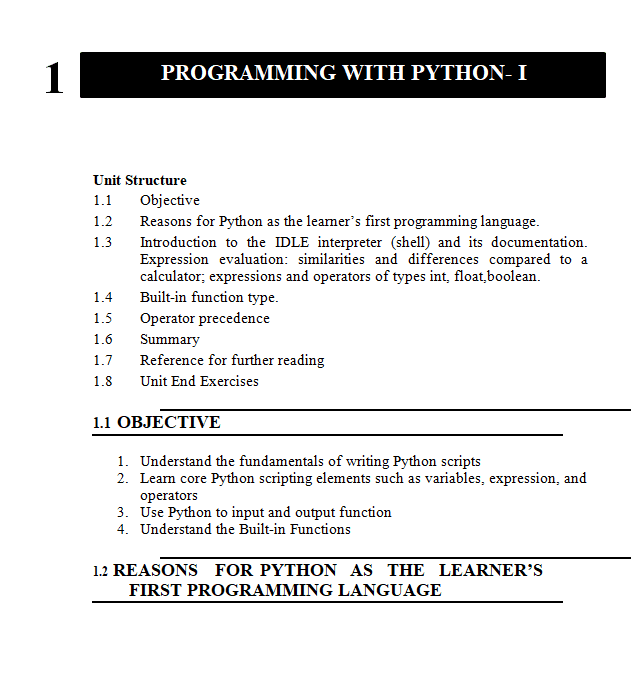
Programming with Python-I
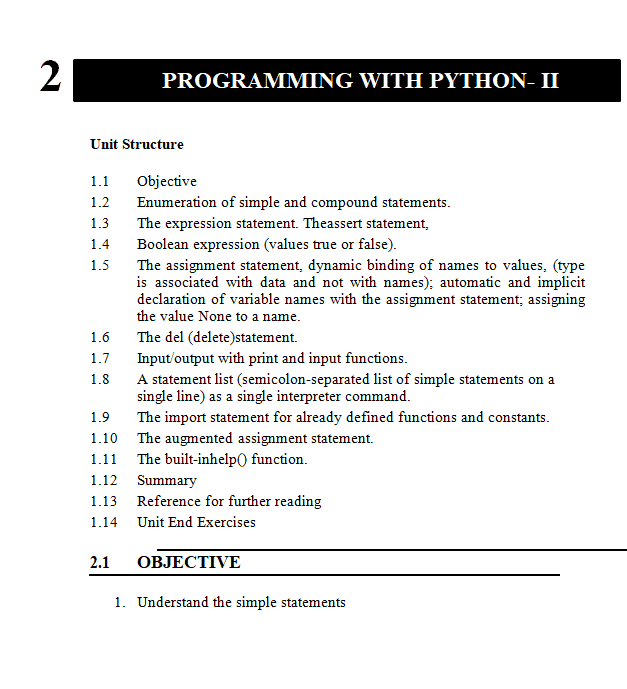
Programming with Python-II
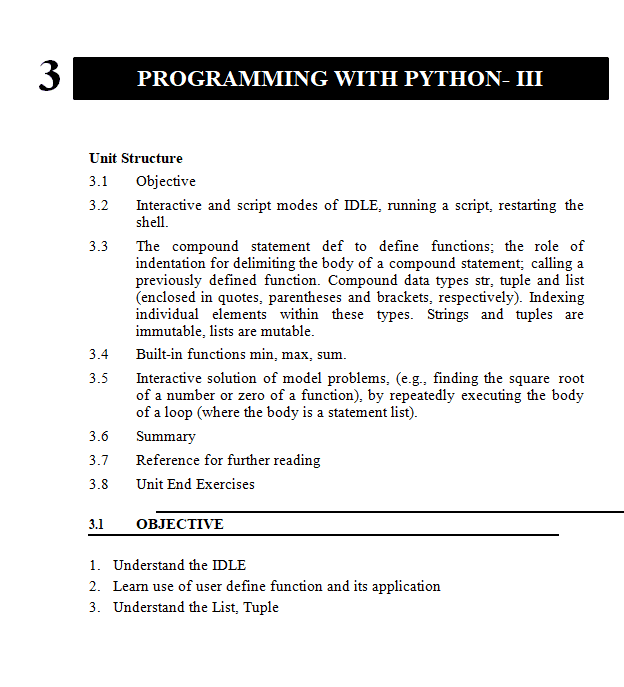
Programming with Python-III
Unit 2
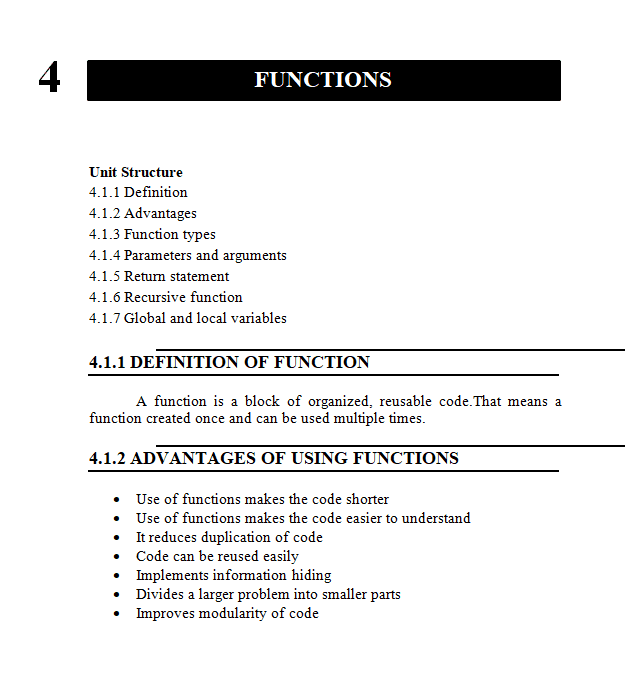
Functions
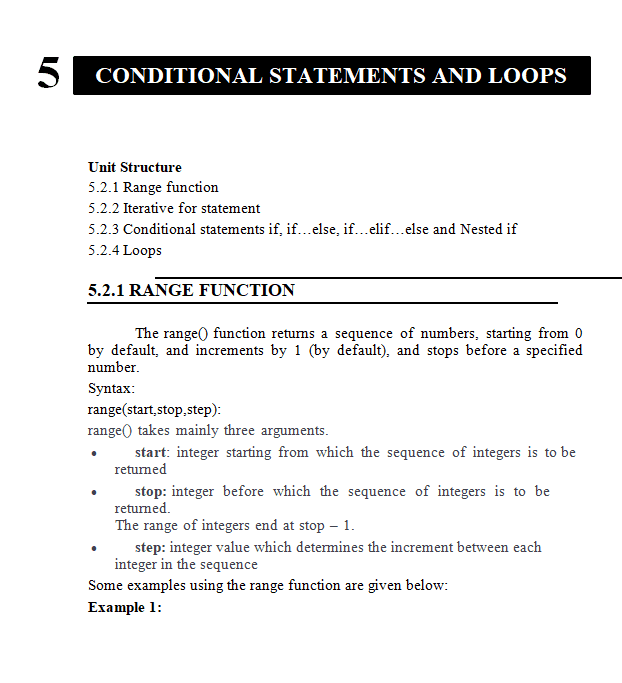
Conditional Statements and Loops
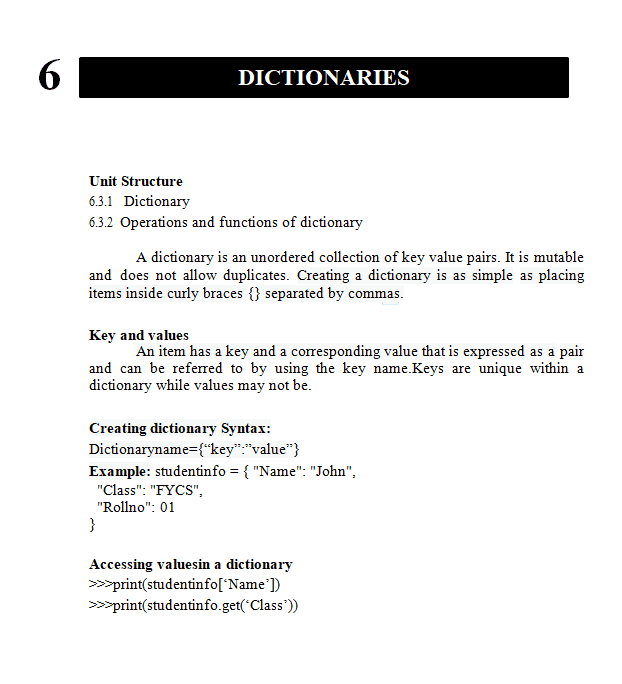
Dictionaries
Unit 3
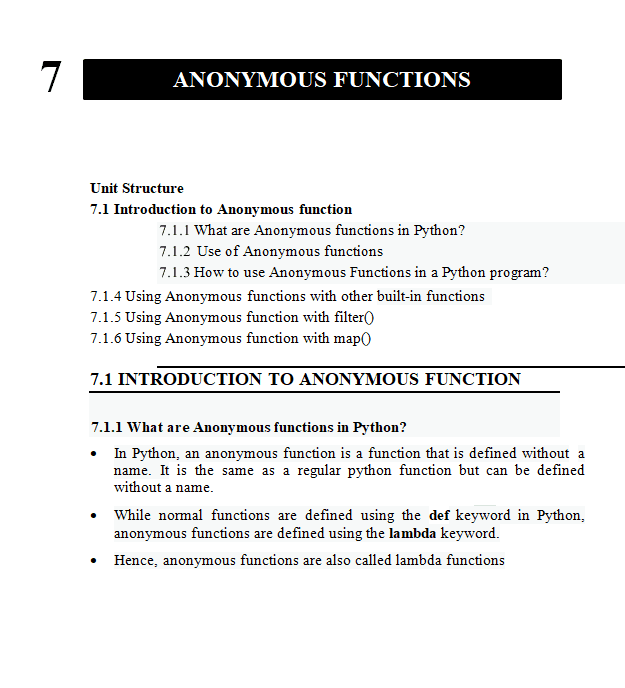
Anonymous Functions
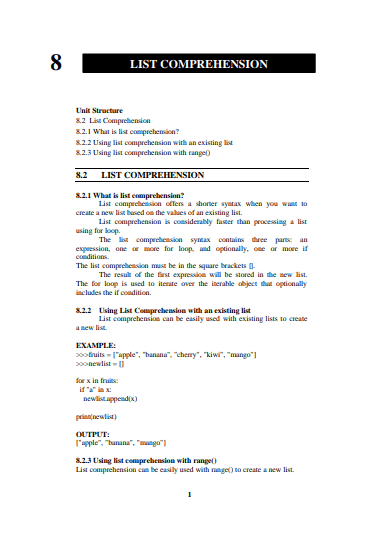
List Comprehensions
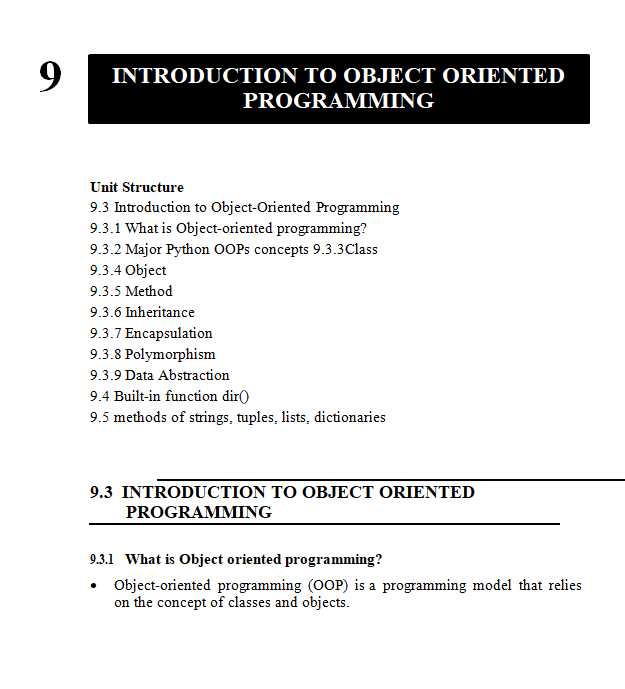
Introduction to Object Oriented Programming
Objectives of Programming in Python :-
The objective of this paper is to introduce various concepts of programming to the students using Python.
Expected learning outcomes :-
- Students should be able to understand the concepts of programming before actually starting to write programs.
- Students should be able to develop logic for Problem Solving.
- Students should be made familiar about the basic constructs of programming such as data, operations, conditions, loops, functions etc.
- Students should be able to apply the problem solving skills using syntactically simple language i.e. Python (version: 3.X or higher)
Recommended Books and Resources
Text books:
- Beginning Python From Novice to Professional (Magnus Lie Hetland) (2017)
- Practical Programming An Introduction to Computer Science Using Python 3 (Paul Gries , Jennifer Campbell, Jason Montojo)
Additional References:
- Introduction to Computer Science using Python (Charles Dierbach) Wiley, 2013
- Paul Gries, Jennifer Campbell, Jason Montojo, Practical Programming: An Introduction to Computer Science Using Python 3, Pragmatic Bookshelf, 2/E 2014
- Adesh Pandey, Programming Languages – Principles and Paradigms, Narosa, 200
Beginning Python From Novice to Professional (Magnus Lie Hetland) (2017)
100K+ Downloads
Practical Programming An Introduction to Computer Science Using Python 3 (Paul Gries , Jennifer Campbell, Jason Montojo)
100K+ Downloads
Introduction to Computer Science using Python (Charles Dierbach) Wiley, 2013
100K+ Downloads
Scope of Programming in Python :-
Understanding Python Syntax and Semantics: Study of Python language syntax, data types, control structures, and how code is executed.
Data Representation in Python: Exploration of variables, data types, and how Python handles numbers, strings, lists, and dictionaries.
Python Libraries and Frameworks: Understanding Python’s vast ecosystem of libraries (e.g., NumPy, Pandas, Matplotlib) and frameworks for web development (e.g., Flask, Django).
Performance Evaluation and Optimization: Techniques for evaluating Python code performance, profiling, and optimizing algorithms and memory usage.
Object-Oriented Programming (OOP): Study of classes, objects, inheritance, polymorphism, and encapsulation in Python for modular and reusable code.
Error Handling and Debugging: Techniques for managing exceptions and errors in Python programs, along with debugging tools.
Python for Data Science and Machine Learning: Using Python for data analysis, visualization, and applying machine learning models using libraries like scikit-learn and TensorFlow.
Concurrency and Parallelism: Exploring Python’s capabilities for handling multiple tasks simultaneously using threading, multiprocessing, and asynchronous programming.
Interfacing with External Systems: Mechanisms for interfacing Python with hardware, databases, APIs, and other systems (e.g., using libraries like SQLite, Requests, and PySerial).
Web Development with Python: Building web applications using Python with tools like Flask, Django, and FastAPI.
Syllabus of Programming Using Python 1
Unit 1
1.1 Programming with Python-I
- Understand the fundamentals of writing Python scripts
- Learn core Python scripting elements such as variables, expression,
and operators - Use Python to input and output function
- Understand the Built-in Functions
1.2 Programming With Python - II
- Understand the simple statements
- Understand the compound statements
- Use Python to delete the statement
- Understand print and input functions in python.
- Understand the built-in help Functions
1.3 Programming With Python - III
- Understand the IDLE
- Learn use of user define function and its application
- Understand the List, Tuple
- Understand the mutable
Unit 2
2.1 FUNCTIONS IN PYTHON
- Use of functions makes the code shorter
- Use of functions makes the code easier to understand
- It reduces duplication of code
- Code can be reused easily
- Implements information hiding
- Divides a larger problem into smaller parts
- Improves modularity of code
2.2 CONDITIONAL STATEMENTS AND LOOPS
- IF
- IF ELSE
- IF ELSE IF
- WHILE LOOP
2.3 DICTIONARIES
- Creating Directories
- Deleting Directories
- Updating Directories
- Accessing Directories
Unit 3
3.1 ANONYMOUS FUNCTIONS
3.2 LIST COMPREHENSION
3.3 INTRODUCTION TO OBJECT ORIENTED PROGRAMMING
- Class
- Object
- Method
- Inheritance
- Encapsulation
- Polymorphism
- Data Abstraction